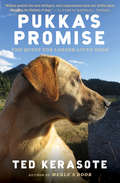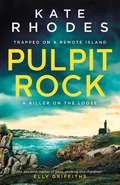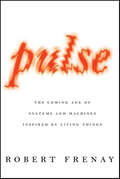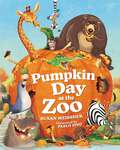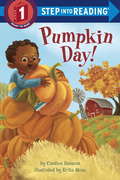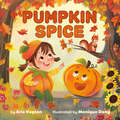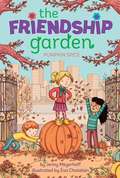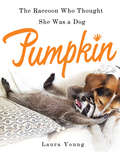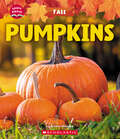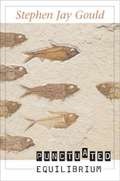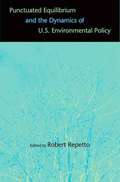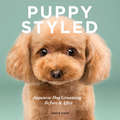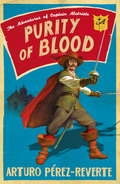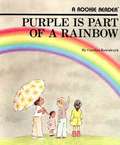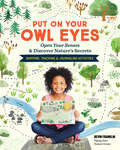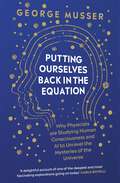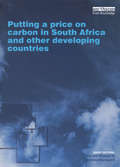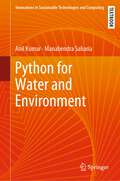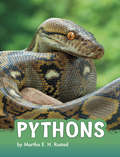- Table View
- List View
Pukka's Promise: The Quest for Longer-Lived Dogs
by Ted KerasoteThis guide by the author of Merle&’s Door is &“beneficial for anyone who wants to ensure that their dogs will be healthy and well&” (Seattle Post-Intelligencer). From the bestselling author who offers &“the most utterly compelling translation of dog to human I have ever seen&” (Jeffrey Masson), this is a joyful chronicle of a dog and a groundbreaking answer to the question: How can we give our dogs the happiest, healthiest lives? When Ted Kerasote was ready for a new dog after losing his beloved Merle—who died too soon, as all our dogs do—he knew he wanted to give his puppy Pukka the longest life possible. But how to do that? So much has changed in the way we feed, vaccinate, train, and live with our dogs from even a decade ago. In an adventure that echoes The Omnivore&’s Dilemma with a canine spin, Kerasote tackles these subjects, questioning our conventional wisdom and emerging with vital new information that will surprise even the most knowledgeable dog lovers. Can a purebred be as healthy as a mixed breed? How many vaccines are too many? Should we rethink spaying and neutering? Is raw food really healthier than kibble, and should your dog be chewing more bones? Traveling the world and interviewing breeders, veterinarians, and leaders of the animal-welfare movement, Kerasote pulls together the latest research to help us rethink the everyday choices we make for our companions. And as he did in Merle&’s Door, Kerasote interweaves fascinating science with the charming stories of raising Pukka among his dog friends in their small Wyoming village. Funny, revelatory, and full of the delights of falling in love with a dog, Pukka&’s Promise will help redefine the potential of our animal partners.
Pulpit Rock: The Isles of Scilly Mysteries: 4
by Kate RhodesTHE ISLES OF SCILLY MYSTERIES #4 &‘Clever, atmospheric and compelling, it&’s another masterclass in plotting&’ WOMAN'S WEEKLY 'Rhodes is a published poet and every one of her sentences sings' FINANCIAL TIMESWITH A KILLER ON THE LOOSE As the scorching summer sun beats down on St Mary&’s in the Isles of Scilly, DI Ben Kitto and his team are training for the annual Swimathon, until they discover a body hanging from Pulpit Rock, dressed in a bridal gown.ON A TINY ISLAND An obsessive killer is hunting for female victims. Kitto has no choice but to stop anyone leaving St Mary&’s, but soon another woman is attacked.EVERYONE IS A SUSPECT The killer must be a trusted member of the community. Kitto&’s investigation is being watched closely, the killer always one step ahead, as the next victim is chosen . . .NO ONE IS SAFE PRAISE FOR KATE RHODES: &‘Gripping, clever and impossible to put down. I&’ve been a Kate Rhodes fan for years and in Ben Kitto she has created a detective who is just as complex and compelling as Kate&’s elegant plotting and stunning prose. The claustrophobia and paranoia of the island are so brilliant evoked, I could almost feel the tide encroaching as time ran out to find the killer' ERIN KELLY &‘Absorbing and complex, Hell Bay kept me guessing until the final pages&’ RACHEL ABBOTT 'A vividly realised protagonist whose complex and harrowing history rivals the central crime storyline' SOPHIE HANNAH 'Beautifully written and expertly plotted; this is a masterclass' GUARDIAN 'Expertly weaves a sense of place and character into a tense and intriguing story' METRO 'Rhodes does a superb job of balancing a portrayal of a tiny community oppressed by secrets with an uplifting evocation of setting' Jake Kerridge, SUNDAY EXPRESS &‘The whole book tingles with tension. I hope it does for the Scilly Isles what Ann Cleeves did for Shetland' MEL MCGRATH 'I love reading Kate's books in the way I love reading Sophie Hannah – a poet writing crime fiction is a great thing . . . It is at once a locked-room mystery, a story of the returning hero, and an examination of fear and abuse. It has the air of a twenty-first century Agatha Christie' JULIA CROUCH
Pulse
by Joe CardilloJuniors in high school and very much in love, Jason and his girlfriend, Kris, feel in sync with the beat of the universe. Then word gets out that the local planning board wants to turn their favorite outdoor retreat into a shopping mall. To fight back, the outraged couple organizes a student environmental group called Pulse. With a mission to save the Pinehaven wilderness area, Pulse embarks on a battle against city hall. But soon Jason and Kris discover a web of local corruption more tangled than they ever suspected. Everyone appears to be in it for the Almighty Dollar--even Kris's mom, who wants to move her flower shop to the new mall. When a crew of punk kids at school decides that they're personally going to stop the Pulse activists, just for kicks, Jason and Kris resolve to lay everything on the line. What they don't know is that it may cost a life. Using a contemporary, stream-of- consciousness voice that hums with authenticity, Joe Cardillo weaves a lyric and involving love story for our time.
Pulse: The Coming Age of Systems and Machines Inspired by Living Things
by Robert FrenayPulse is not about dance music, not about heart rates—and not about electromagnetic fields. What it does describe is a sea change in human affairs, a vast and fundamental shift that is about to transform every aspect of our lives. Written in lively prose for lay readers, Pulse shows how ideas that have shaped Western science, industry, and culture for centuries are being displaced by the rapid and dramatic rise of a "new biology"—by human systems and machines that work like living things.In Pulse, Robert Frenay details the coming world of• emotional computers• ships that swim like fish• hard, soft, and wet artificial life• money that mimics the energy flows in nature• evolution at warp speedAnd these are not blue-sky dreams. By using hundreds of vivid and concrete examples of cutting-edge work, Frenay showcases the brilliant innovations and often colorful personalities now giving birth to a radical new future. Along the way, he also offers thoughtful conclusions on the promises—and dangers—of our transformation to the next great phase of "human cultural evolution."
Pumpkin Day at the Zoo
by Susan Meissner"Refreshingly, an autumn book that isn't about Halloween." —Kirkus ReviewsWhen farmers and pumpkin patch owners donate their pumpkins to the zoo, the animals chomp, chew, play, and give hearty hoorays for their favorite squishy squash! Grab a pumpkin and follow along as this lighthearted, lyrical zoo book for preschoolers and elementary-age kids from bestselling novelist Susan Meissner celebrates the fall season in the most entertaining way.Here come the wagons down the streets, rumbling and tumbling with pumpkin treats! Kids will love watching the zoo animals enjoy their autumn snack in this educational, rhyming story.With lively artwork from illustrator Pablo Pino, Pumpkin Day at the Zoois ideal for ages 4–8;is recommended for classrooms and libraries focused on animal life, fall festivities, and generosity;shows kids the importance of donating and repurposing excess; andis the perfect gift for National Pumpkin Day, back-to-school celebrations, Halloween, or Thanksgiving.Both humorous and educational, Pumpkin Day at the Zoo applauds all the good that comes from sharing in your community.
Pumpkin Day! (Step into Reading)
by Candice Ransom Erika MezaIn this Step 1 Step into Reading early reader, a boy and his family visit a pumpkin patch to pick out perfect autumn gourds--just in time for Halloween! Buoyant rhymes and joyful art evoke the excitement of the season. Step 1 Readers feature big type and easy words for children who know the alphabet and are eager to begin reading. Rhyme and rhythmic text paired with picture clues help children decode the story.
Pumpkin Heads
by Wendell MinorHalloween is time to pick pumpkins and carve them into pumpkin heads--jack-o'-lanterns of every shape and size!Award-winning author and artist Wendell Minor uses simple language and striking autumn settings to celebrate jack-o'-lanterns in this reissue of a Halloween classic. The perfect holiday read aloud, Pumpkin Heads takes readers and trick-or-treaters from the pumpkin patch for picking, all the way home for carving, and gets everyone in the Halloween spirit.
Pumpkin Spice
by Arie KaplanA delicious celebration of fall that hits all the senses, complete with a recipe for a homemade pumpkin spice blend! Little ones will love cozying up with this board book and learning all about the delights of autumn.Pumpkin Spice is getting ready to paint the leaves red, yellow, and orange for fall when she meets a talking pumpkin who introduces her to the real reason the leaves change color, before immersing her in the sights, smells, and tastes of the season.Focusing on the senses, this board book celebrates all the reasons to love the fall—from the beautiful foliage to the delicious food to the joyful holidays.
Pumpkin Spice
by Éva Chatelain Jenny MeyerhoffAnna and her community gardening friends are excited for the Windy City Pumpkin Fest but then their prize pumpkin disappears in the second book in the Friendship Garden series.Autumn has arrived at the Friendship Garden! That means: 1. Pumpkins for carving 2. Sweet potatoes for eating 3. Piles of leaves for jumping Besides tons of yummy fall food, Anna is excited for the Windy City Pumpkin Fest. There is going to be a bake-off, a moon bounce--even a biggest pumpkin contest! Anna, Kaya, and Reed are sure that their pumpkin, Herbert, will take home first prize. But just two days before the contest, Herbert disappears! Kaya and Anna are sure someone stole their perfect pumpkin. After all, pumpkins can't just get up and walk away by themselves. Can the Friendship Garden crew catch the orange-fingered thief in time for the festival?
Pumpkin: The Raccoon Who Thought She Was a Dog
by Laura L. YoungAs a baby, Pumpkin the Raccoon was abandoned by her parents after falling out of a tree and breaking her leg. Taken in by a family with two rescue dogs, Toffee and Oreo, Pumpkin gained a new set of "parents" and a life of luxury in the Bahamas.Pumpkin: The Raccoon Who Thought She Was a Dog is a sweet, unique look at an adorable household pet, captured in gorgeous, never-before-seen photographs in luxurious settings. Pumpkin's message is that friendship and love can be found in the most unlikely of companions. With a lot of personality, and a little bit of mischief, Pumpkin will capture hearts all around the world.
Pumpkins (Learn About)
by Brenna MaloneyLet's learn all about the most important symbols and celebrations of the fall season!Jack-o-lanterns, pumpkin pies, and visits to pumpkin patches let us know that fall has arrived! With vibrant photos and lively text, this book explores how pumpkins grow, get harvested, turned into delicious treats, and more! Get ready to learn all about pumpkins in fall!ABOUT THE SERIES: Fall is here and so are colorful leaves, delicious apples, orange pumpkins, and lots of celebrations! With this new series, dive into the icons that make fall so much fun. Why do we harvest apples in fall? How does a pumpkin grow? Why do leaves change color? What holidays are in fall? With gorgeous photographs and simple text, this is a celebratory exploration of the fall season.
Pumpkins (Wonder Books)
by Cynthia Klingel Robert B. NoyedIn this Level One reader in the Wonder Book series, beginning readers learn how that small seed becomes a large pumpkin. Other books in this series, and other books by these authors, are available in this library.
Punctuated Equilibrium
by Stephen Jay Gould"Punctuated Equilibrium" holds that the great majority of species originate in geological moments (punctuations) and persist in stasis. The idea was hotly debated because it forced biologists to rethink entrenched ideas about evolutionary patterns and processes. But as Gould shows here in his typically exhaustive coverage, the idea has become the foundation of a new view of hierarchical selection and macro-evolution.
Punctuated Equlibrium and the Dynamics of U. S. Environmental Policy
by James Gustave Speth Robert RepettoAlthough many environmental policy issues remain deadlocked for decades with little movement, sometimes breakthroughs occur abruptly. Why do deadlocks persist? Why do major policy shifts occur infrequently? Is it possible to judge when policies are ripe for change? This book presents new empirical evidence that the punctuated equilibrium theory of policy dynamics fits the facts of environmental policy change and can explain how stable policies can suddenly unravel in discontinuous change. The distinguished contributors to the volume apply the theory to a wide range of important environmental and resource issues and assess case histories in water, forestry, fisheries, public lands, energy and climate some of which resulted in breakthroughs, others in stalemate. They offer insights into the political conditions and tactics that are likely to produce these disparate outcomes. Every professional, activist, and student concerned with promoting (or resisting) change in environmental and natural resources policies will find this up-to-date book an invaluable guide.
Puppy Life: The First Eight Weeks of Bonding, Playing, and Growing
by Traer ScottThe perfect gift for dog lovers and new puppy parents alike, Puppy Life follows the stages of development of six litters of puppies across breeds from birth through eight weeks. Featuring 120 full-color photographs from best-selling animal photographer Traer Scott, this exploration of puppyhood is ideal for fans of The Dogist and Finding Home. Tracing six litters of puppies from birth through eight weeks, Traer Scott takes you on a photographic journey through puppyhood. Her full-color photography provides a visual diary of how dogs mature and grow, as well as information about each stage of puppy development leading up to the day each puppy goes to its forever home. Follow the stories of these litters across different ages, with informative text about each breed and developmental stage: • English Setters• Great Pyrenees• Cavalier King Charles Spaniels• Labradors• Mixed Breed Adorable and educational, this beautifully photographed guide to puppies is sure to melt your heart.
Puppy Styled: Japanese Dog Grooming: Before And After
by Grace ChonDoggie makeovers that will make you smile Japanese dog grooming does not follow the rules of traditional, breed- standard grooming. In fact, it only has one mission—to make dogs look as adorable as possible! With extreme attention to detail and careful consideration of a pup’s best attributes, Japanese dog groomers and salons achieve the perfect transformation by forgetting uniform looks and getting creative. From internationally acclaimed pet photographer and author of Waggish: Dogs Smiling for Dog Reasons comes this adorable book, which showcases the transformation of dogs going from cute to cutest. Originally a viral photo series called “Hairy,” Grace Chon’s work perfectly captures the whimsy and glamour of freshly groomed furry friends. With nearly 50 before- and- afters, Chon proves that Japanese dog grooming is not just a haircut, but a work of art.
Purity of Blood: The Adventures of Captain Alatriste (The Adventures of Captain Alatriste)
by Arturo Perez-ReverteThe second 'Captain Alatriste' novel, from a series which has sold 4 million copies worldwideA woman has been found in a sedan chair in front of a church, strangled. In her hand is a pouch containing fifty escudos and a handwritten - but unsigned - note bearing the words 'For masses for her soul'. The chief constable Martin Saldana confides in his old friend and comrade in arms, Diego Alatriste. Still in danger from the powerful enemies he made in his first adventure, Captain Alatriste is considering returning to Flanders where the war has just resumed. But first, his old friend Quevedo asks him for a favour. The daughter of one of his friends must be rescued from a convent, which certain 'priests' seem to be treating as little more than a harem. Then the woman who brought the girl to the convent goes missing and the connection is made to the murder at the church. It seems that Alatriste's sword is required once more.
Purple Pinchers and Other Hermit Crabs (World Book's Animals of the World)
by Sheri RedaTopics in the book include how to care for a hermit crab, how it transfers from house to house, and how to care for one as a pet.
Purple is Part of a Rainbow (Fountas & Pinnell LLI Blue #Level E)
by Gene Sharp Carolyn KowalczykRookie Readers RM have provided entertaining, high-quality introductions to reading for more than a generation. Each title features full-color, often hilarious illustrations and engaging stories that always involve a young child figuring out concepts or solving problems on his or her own. Every new title contains a Word List and a color-coded reading-level key on the back cover.
Put On Your Owl Eyes: Open Your Senses & Discover Nature's Secrets; Mapping, Tracking & Journaling Activities
by Devin FranklinChildren will see the natural world around them with brand new eyes, as they learn to follow its signs, hear its language, and understand its secrets. With this unique and compelling book written by expert environmental educator Devin Franklin, kids aged 8 to 13 will build their own relationship with nature through finding a “Sit Spot” — an outdoor space in the backyard, in a field or in the woods, in a vacant lot or a city park — where they can stop, observe, and become familiar with the flora and fauna that live there. From the Six Arts of Tracking (Who, What, Where, When, Why, and How) and making a habitat map to walking in smooth silence like a fox and learning the basics of bird language, exploration exercises lead young readers on a fascinating journey of discovery as they watch, listen, map, interpret, and write about the sounds, sights, scents, and patterns they encounter. With journaling prompts, map-making activities, and observational tracking practice throughout, Put On Your Owl Eyes is an interactive and thought-provoking guidebook. This publication conforms to the EPUB Accessibility specification at WCAG 2.0 Level AA.
Putting Ourselves Back in the Equation: Why Physicists Are Studying Human Consciousness and AI to Unravel the Mysteries of the Universe
by George MusserDistant galaxies, dark matter, black holes – elusive, incomprehensible and inhospitable – these are the building blocks of modern physics. But where do we fit in this picture? For centuries, we have separated mind from matter. While physicists have pursued a theory of &‘everything&’ with single-minded purpose, the matter of the mind, of human consciousness, has been conveniently sidestepped and ignored – consigned to priests, philosophers and poets. With the ambition of Stephen Hawking, Carlo Rovelli and Brian Cox, Putting Ourselves Back in the Equation sets out a bold new vision for theoretical physics, unrestricted by sleek equations and neat formulations. Combining cutting-edge neuroscience with the latest in quantum mechanics, acclaimed writer Musser offers a new interpretation of human consciousness. From bizarre cognitive phenomena, like lucid dreaming and self-taught synaesthesia, to the latest technological developments in AI, Musser asks: what can physics teach us about what it means to be human?
Putting a Price on Carbon in South Africa and Other Developing Countries (Climate Policy Ser.)
by Harald WinklerHow should we be putting a price on carbon, particularly in developing countries? This volume takes up this contested issue and examines how different economic instruments might apply in developing countries, with a special focus on South Africa. The papers included address a variety of themes in this area: Emissions trading, carbon taxes, fiscal and non-fiscal instruments, policy and institutional dimensions, and lessons from the Clean Development Mechanism. Presenting the very latest research, the volume will be of interest to academics and policymakers in economics, policy and development.
Python for Water and Environment (Innovations in Sustainable Technologies and Computing)
by Anil Kumar Manabendra SahariaThis textbook delves into the practical applications of surface and groundwater hydrology, as well as the environment. The Part I, "Practical Python for a Water and Environment Professional," guides readers through setting up a scientific computing environment and conducting exploratory data analysis and visualization using reproducible workflows. The Part II, "Statistical Modeling in Hydrology," covers regression models, time series analysis, and common hypothesis testing. The Part III, "Surface and Subsurface Water," illustrates the use of Python in understanding key concepts related to seepage, groundwater, and surface water flows. Lastly, the Part IV, "Environmental Applications," demonstrates the application of Python in the study of various contaminant transport phenomena.
Pythons (Animals)
by Martha E. RustadPythons are some of the largest snakes in the world. They squeeze their prey with their bodies, and have flexible jaws so they can swallow big animals. Get all the facts on these powerful snakes.
